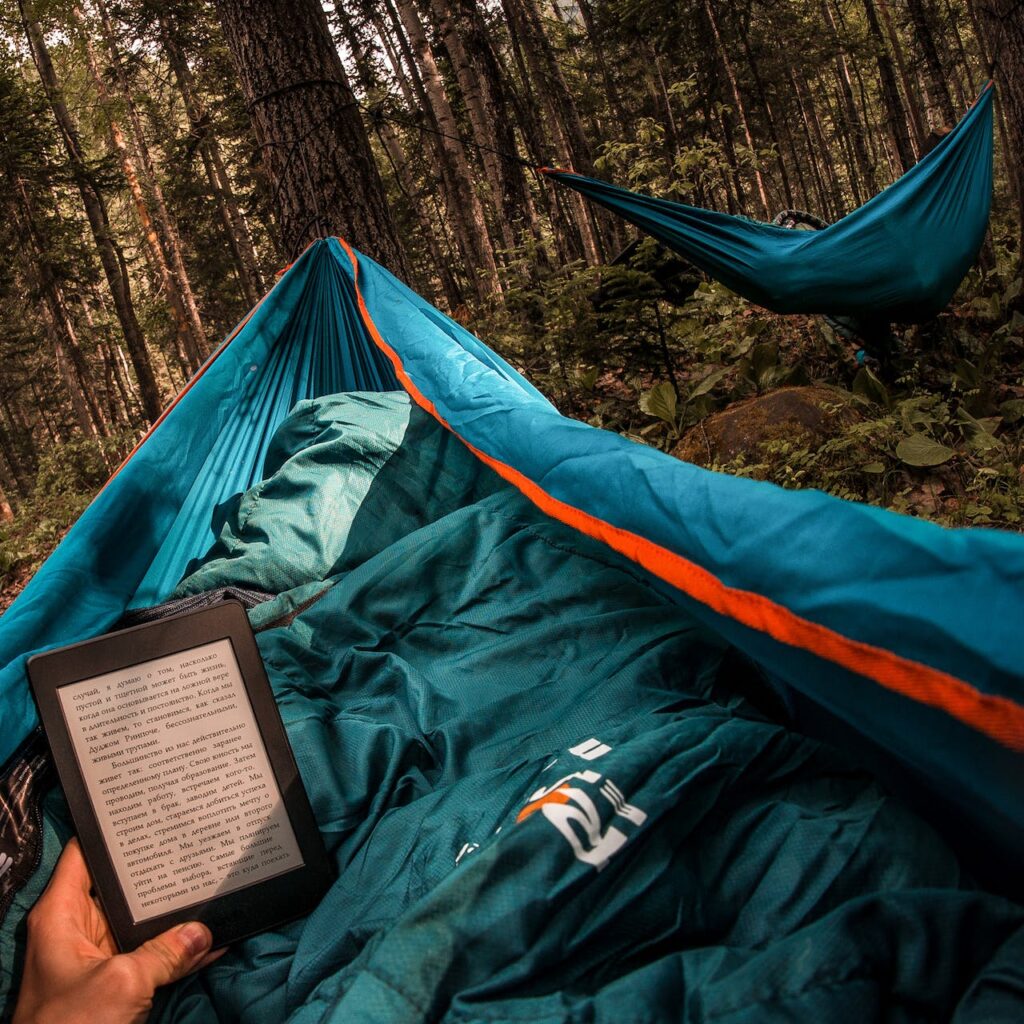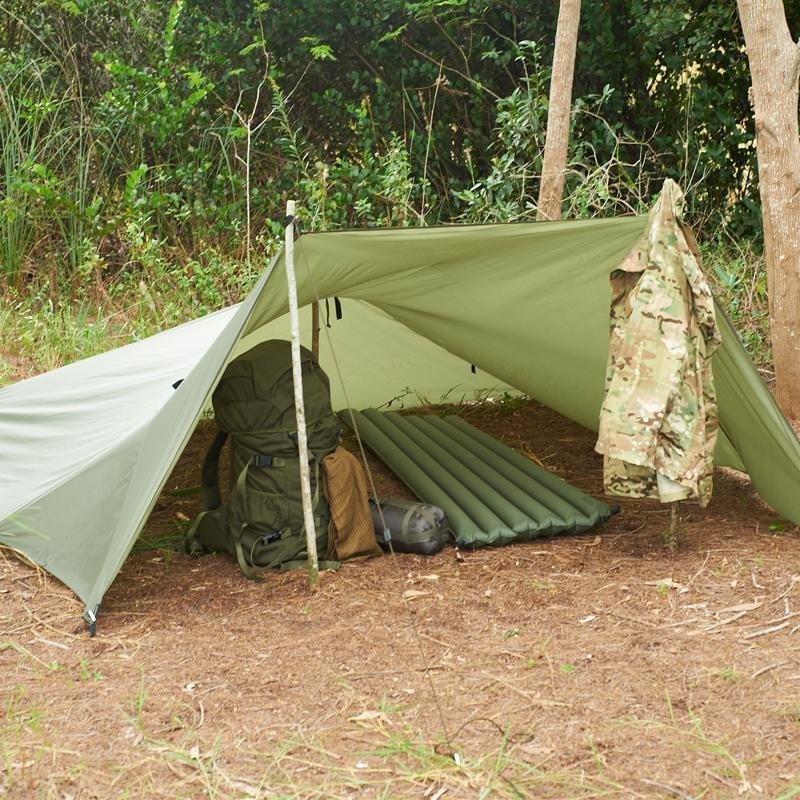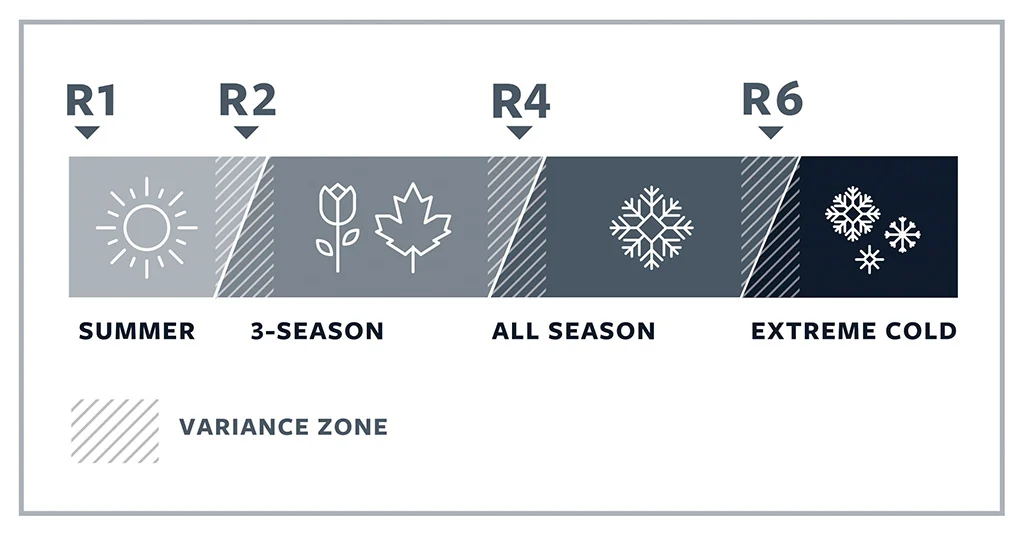Embracing the freedom and connection with nature
Camping without a tent not only removes physical barriers but also fosters a deeper connection with nature. It allows you to become one with your surroundings while embracing a sense of freedom rarely experienced in our modern lives.

In our modern age where technology consumes so much of our attention, camping without a tent provides a rare opportunity to disconnect and reconnect with what truly matters. You will find that without the distractions of screens and walls, your senses sharpen, and your appreciation for the world around you deepens.
The rustle of leaves, the chirping of birds, and the scent of pine become vivid reminders of our place within nature. If you’re ready to go on an adventure that goes beyond regular camping experiences, pack your gear (or lack thereof) and embrace the joy and connection with nature that comes with camping without a tent.
Preparing for Camping Without a Tent
Choosing the Right Location
Picture this: you’re surrounded by nature’s boundless beauty, breathing in the crisp, untainted air, and basking in the serenity that only the great outdoors can provide. To embark on a tentless adventure, it’s crucial to select the perfect location that aligns with your desires. Researching campsites with suitable natural shelters is an excellent starting point.
Look for places blessed with overhanging cliffs, dense foliage, or even rock formations that can shield you from unexpected rain or sunlight. Another thing to consider when choosing your camping spot is the weather conditions and terrain.
The last thing you want is to be caught unprepared in a downpour or extreme heat without any shade. Familiarize yourself with seasonal variations and climate patterns of your desired location.
Keep an eye out for forecasts, ensuring you plan your trip during favorable weather conditions. Examine the terrain of your chosen campsite as it will affect how easily you can find natural shelters or set up alternatives.
Essential Gear for Tent-Free Camping
When it comes to camping without a tent, having suitable gear becomes paramount for comfort and protection against nature’s unpredictability. Two key items that should top your list are a sleeping bag and a sleeping pad.
Choose one that matches the expected temperatures of your camping destination – whether it’s a lightweight summer bag or something more robust for colder climates.
Equally important is a quality sleeping pad that acts as insulation between you and the ground beneath. It not only adds cushioning but also prevents heat loss through conduction on chilly nights or dampness from seeping into your resting place.
Opt for a pad that suits your preference – be it an inflatable air mattress or a foam pad that offers durability and reliability. Consider lightweight tarps or hammocks as shelter alternatives.
These versatile options provide protection against the elements while allowing you to fully immerse yourself in nature’s embrace. A tarp can be rigged up in various configurations to create a roof-like structure, shielding you from rain, wind, or even glaring sunlight.
Hammock Camping
Selecting a Sturdy, Comfortable Hammock
When it comes to hammock camping, choosing the right hammock is paramount for a comfortable and secure sleep under the stars. Two popular types of hammocks are the gathered-end and bridge hammocks.
The gathered-end style is characterized by its curved shape when hung, offering a cozy cocoon-like experience. On the other hand, bridge hammocks have a flatter sleeping surface due to their spreader bars.
Consider your personal preferences and desired level of comfort before making your selection. Weight capacity and durability are also crucial factors to take into account.
Ensure that your chosen hammock can support your weight without compromising its integrity. Look for reinforced stitching and high-quality materials such as ripstop nylon or polyester to ensure longevity and resilience against wear and tear during camping adventures.
| Variable | Gathered-End Hammocks | Bridge Hammocks |
|---|---|---|
| Shape | Banana-shaped with gathered ends. | Flatter, rectangular shape. |
| Comfort | More traditional, with a deeper sag. | Flat, ergonomic design for flatter sleeping. |
| Lying Position | Diagonal position for sleeping. | More horizontal, flat position. |
| Spread of Fabric | Wider fabric for comfort. | Taut and stretched fabric. |
| Entry/Exit | Easier to get in and out of. | Requires more effort for entry/exit. |
| Weight Limit | Generally lower weight capacity. | Typically higher weight capacity. |
| Comfort for Side Sleepers | Less suitable for side sleeping. | Better for side sleeping due to flatter design. |
| Price | Often more affordable. | Typically more expensive. |
| Portability | Compact and easy to carry. | Less compact, may require more space. |
| Suspension | Often uses a simple, lightweight suspension system. | May require a more complex suspension system. |
| User Preference | Suitable for those who prefer a classic hammock experience. | Great for those who want a flatter, ergonomic sleep position. |
Setting Up Your Hammock Properly
To enjoy restful nights in your hammock, you need to set it up correctly. If you have two sturdy trees available, you can hang your hammock between them using suspension straps or tree-friendly straps designed not to damage the bark.
Make sure the trees are at a suitable distance apart with no potential hazards above like dead branches. If trees aren’t an option, fear not!
Hammock stands offer an excellent alternative for setting up your sleeping spot anywhere you desire. These portable stands usually consist of metal frames that provide stability while allowing you to adjust the height according to personal preference.
Don’t forget about adjusting those suspension straps too! With proper tensioning, you’ll achieve optimal comfort while avoiding any sagging or excessive tightness that could lead to discomfort during sleep.

Tarp Camping
Choosing the Right Tarp Material and Size
Tarp camping, the epitome of minimalist outdoor living, requires careful consideration of the tarp material and size. Silnylon and polyethylene are two popular options for tarp materials. Silnylon is a lightweight yet durable fabric that offers excellent waterproofing capabilities, making it ideal for unpredictable weather conditions.
Polyethylene tarps, on the other hand, are more affordable but slightly bulkier, providing reliable protection against rain and UV rays. When selecting the size of your tarp, consider the desired coverage area and how many people it needs to accommodate.
A larger tarp will offer more space for relaxation during the day or sheltering from rain while sleeping at night. However, keep in mind that a larger tarp also means more weight to carry.
Mastering Tarp Pitching Techniques
To make the most out of your tarp camping experience, mastering different pitching techniques is essential. Basic setups like A-frame or lean-to pitches are popular choices that offer excellent coverage against rain or wind from one direction. The diamond pitch provides a diagonal shape that utilizes four anchor points for increased stability.
Utilizing natural features such as trees or rocks as anchor points can enhance your tarp’s stability. Wrap cords around tree trunks or use sturdy branches as supports when setting up your campsite.
This approach ensures a secure shelter without leaving any traces behind. With these tips in mind, you’re ready to embark on your tentless camping adventure using hammocks or tarps as your cozy shelter alternatives in nature’s embrace!

Essential Tips for Tentless Nights
Selecting a Sleeping System
When it comes to camping without a tent, a comfortable sleeping system is essential for a restful night under the stars. The first consideration is an insulated sleeping pad to prevent heat loss from the ground.
Look for pads with high R-values (thermal resistance) as they provide better insulation. Foam or inflatable pads are popular choices, providing cushioning and insulation against the cold earth beneath you.

Sleeping Bags Suitable for Various Temperatures
Choosing the right sleeping bag can make all the difference in your tentless camping experience. Opt for a bag suitable for various temperatures to adapt to changing weather conditions. Look at temperature ratings (comfort, lower limit) and consider the seasons you’ll be camping in.
Synthetic or down-filled bags are common options, each with their pros and cons. Synthetic bags are more resistant to moisture but may be bulkier, while down-filled bags offer excellent warmth-to-weight ratio but lose insulating properties when wet.
Bug Protection: A Must-Have
Insects can be unwelcome companions during any camping trip, so it’s crucial to include bug protection measures in your tent-free adventure kit. Mosquitoes and other pests can disrupt your sleep and leave you feeling itchy and frustrated.
Pack a reliable insect repellent that suits your preferences—be it a DEET-based spray or natural alternatives like citronella or eucalyptus oil-based products. By selecting an appropriate sleeping system with insulated sleeping pads and versatile sleeping bags for various temperatures, you’ll ensure comfort throughout your tentless nights.
